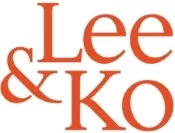Background
Since its enactment in 1949, the Korean Trademark Act has been frequently amended to keep up with rapidly changing industrial and commercial environments. The end result, however, has been legislation that is oftentimes inefficient, inconsistent, and complicated.
The Korean Trademark Act was originally based on a rigid first-to-file rule. The Korean Trademark Act has evolved to adopt some first-to-use elements in order to protect real trademark users from nominal trademark owners.
In the last couple of years, there have already been important revisions regarding "acquired distinctiveness through use" and "trademark dilution." Now, Korea's new trademark law includes all the past revisions in a more consistent and systematic order and reflects some additional fundamental shifts.
In contrast to expectations, however, the new trademark law did not include a provision that honors a letter of consent from the owner of a cited mark. Therefore, even under the new trademark law, trademark applicants will not be able to overcome the citation of a prior mark by submitting a letter of consent issued by the owner of the prior mark.
Korea's new trademark law will be in force as of September 1, 2016.
Download - Fundamental Changes to Korea's Trademark Law
The content of this article is intended to provide a general guide to the subject matter. Specialist advice should be sought about your specific circumstances.
We operate a free-to-view policy, asking only that you register in order to read all of our content. Please login or register to view the rest of this article.



